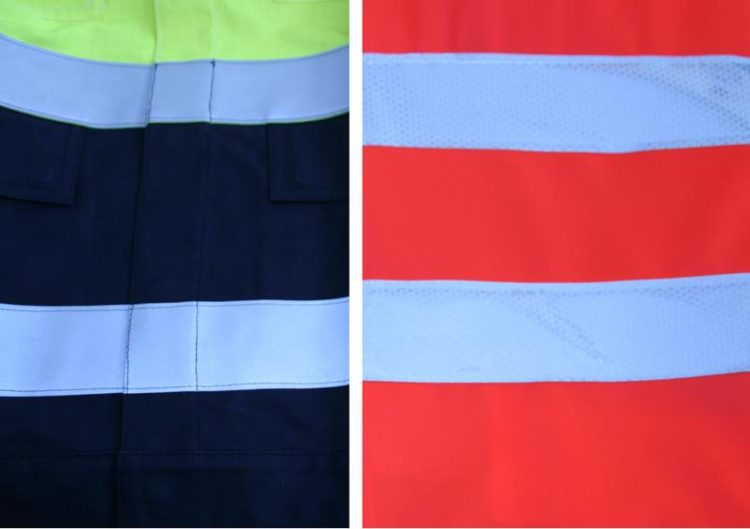Mechanically and visually perfect seams

Safety jacket left - all seams stitched conventionally. Safety jacket right - all seams produced by laser welding. ® Hohenstein Institute
As part of the research project (AiF No. 17031 N) “Absorber systems for the laser welding of textiles”, scientists at the Hohenstein Institute (Bönnigheim) and the DWI Leibnitz Institute for Interactive Materials (Aachen) have developed new absorber systems for laser welding technical textiles in the infrared spectrum. The researchers have already used them to weld all kinds of different textile materials.
With the results of their research, the scientists have overcome one of the main challenges of laser welding: only a few textiles absorb laser radiation in the near-infrared light spectrum and are therefore intrinsically suitable for laser welding. To join other textiles successfully, you have to apply absorber materials to the proposed locations of the seams which absorb the near-infrared light, melt and so join themselves together. However, the absorbers that were commercially available until now caused discolouring around the seams on light-coloured materials and so their potential applications were limited.
The new absorbers, on the other hand, produce a technically high-quality bond between textile materials. The seams are resistant to liquids, mechanically strong, flexible and free of any discoloration. The way is therefore open for laser welding to be used as an alternative, highly effective and promising technology for bonding textiles.
Especially when it comes to producing technical and medical textiles, laser welding offers a number of advantages over traditional joining methods. The seams can be made watertight in a single process. This means that, in contrast to traditional seams, the subsequent “taping” of the seams, whereby special tapes are applied to seal the holes caused in the textile material by the stitching needles, is no longer necessary. Seams created by laser welding are also flat, stretchy, flexible and proof against liquids and gases and they have impressively high tensile strength.
Thanks to automatic in-line monitoring of the welding process, the quality of the joint is measured automatically. This means seam failures are avoided. The cost of checking seam quality is therefore minimised, which is especially important in the manufacture of high-quality products such as medical textiles, protective clothing, outdoor equipment and textiles used in vehicle manufacture and furniture-making.
During the project, the setting parameters for laser welding such as the temperature, speed and pressure were adjusted to suit various different absorbers and textiles. This will enable the manufacturing companies to use the process directly for their own materials and product range.
The new-formula absorbers are easy to use, economical and compatible with different textiles (woven, knitted and warp-knitted textiles, non-wovens, laminates etc.) and accessories (zips, reflectors etc.) . Especially on light and transparent textiles, they produce visually and mechanically perfect seams with excellent performance characteristics.
Laser welding is suitable both for one-off manufacture and for manufacturing with a high degree of automation. Minimising the number of process stages and increasing the quality, together with the high flexibility of the process, will help small and medium-sized companies to increase their turnover and give them competitive advantages over the users of conventional textile joining technologies.
Contact:
Hohenstein Institute
Dr. Edith Classen
e.classen@hohenstein.de
Media Contact
All latest news from the category: Materials Sciences
Materials management deals with the research, development, manufacturing and processing of raw and industrial materials. Key aspects here are biological and medical issues, which play an increasingly important role in this field.
innovations-report offers in-depth articles related to the development and application of materials and the structure and properties of new materials.
Newest articles

Webb captures top of iconic horsehead nebula in unprecedented detail
NASA’s James Webb Space Telescope has captured the sharpest infrared images to date of a zoomed-in portion of one of the most distinctive objects in our skies, the Horsehead Nebula….

Cost-effective, high-capacity, and cyclable lithium-ion battery cathodes
Charge-recharge cycling of lithium-superrich iron oxide, a cost-effective and high-capacity cathode for new-generation lithium-ion batteries, can be greatly improved by doping with readily available mineral elements. The energy capacity and…

Novel genetic plant regeneration approach
…without the application of phytohormones. Researchers develop a novel plant regeneration approach by modulating the expression of genes that control plant cell differentiation. For ages now, plants have been the…





















